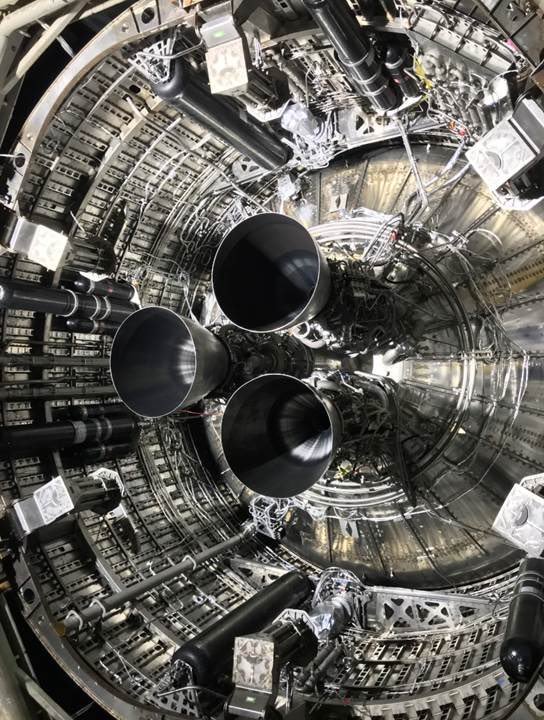SpaceX Starship Prototype #8 Prepares for Flight
Raptor engines (serial numbers 32, 39, and 40) have been installed on Starship Prototype SN8 which is perched on the test stand at #SpaceX's Boca Chica, TX Launch Facility.

The center cluster of Raptors will be surrounded by three RVac Raptors in the future.
These three engines are Sea Level variants that feature a smaller nozzle than the Vacuum Raptor (RVac) engines used at high altitudes or while on orbit.
In future Starhips, surrounding the three Raptors will be three Vacuum-Optimized Raptors. You can also see that inside the engine skirt are six landing legs that fold out right before landing. These landing legs are primarily single-use test legs used to measure loads in order to help design the operational legs that will be on production model Starships.
While Serial Number 8 is readying for its test flight, production of other Starship prototypes is going at record pace. Parts have been spotted for SN9, 10, 11, 12, 13, and 14. Production of the Super Heavy Booster has also begun, even though the Super Heavy Booster High Bay production facility is still under construction.
.jpg)
Raptor Sea Level vs. RVac variant on the right. The engine is pretty much identical except for the nozzle. The larger nozzle aids in directing the gases more efficiently in a low air pressure environments.
The final Starship design will have three RVac engines as well as the three Sea Level engines which are only going to be used for landing. Since Starship is the second stage of the full stack and rides on top of the Super Heavy Booster (which has yet to be built), its engines will not be used until stage separation, at which point it will light up the RVac engines.
There is a plan being floated that for Earth-to-Earth transportation, a booster may not be needed for some routes. In these cases, the Starship would use the Sea Level engines to launch directly from a launch facility and fly to another facility somewhere on Earth.
With the three Raptors mounted on the Starship SN8 prototype, a series of pressure tests will be conducted as well as at least two static fire tests. If successful, we should then see a flight to 15km altitude followed by a very dramatic BellyFlop maneuver, suicide burn, and landing.
When asked about the odds of success, SpaceX Chief Engineer, Elon Musk answered "Fifty-Fifty". For those of you who aren't aware or may not have caught on by now, this is a very standard, boiler-plate answer he gives whenever he is asked this sort of question. He didn't think Falcon Heavy would succeed on its test flight, but it performed flawlessly (except for the center-core landing).
Either way, success or failure, the next couple of weeks are going to give us a great show.